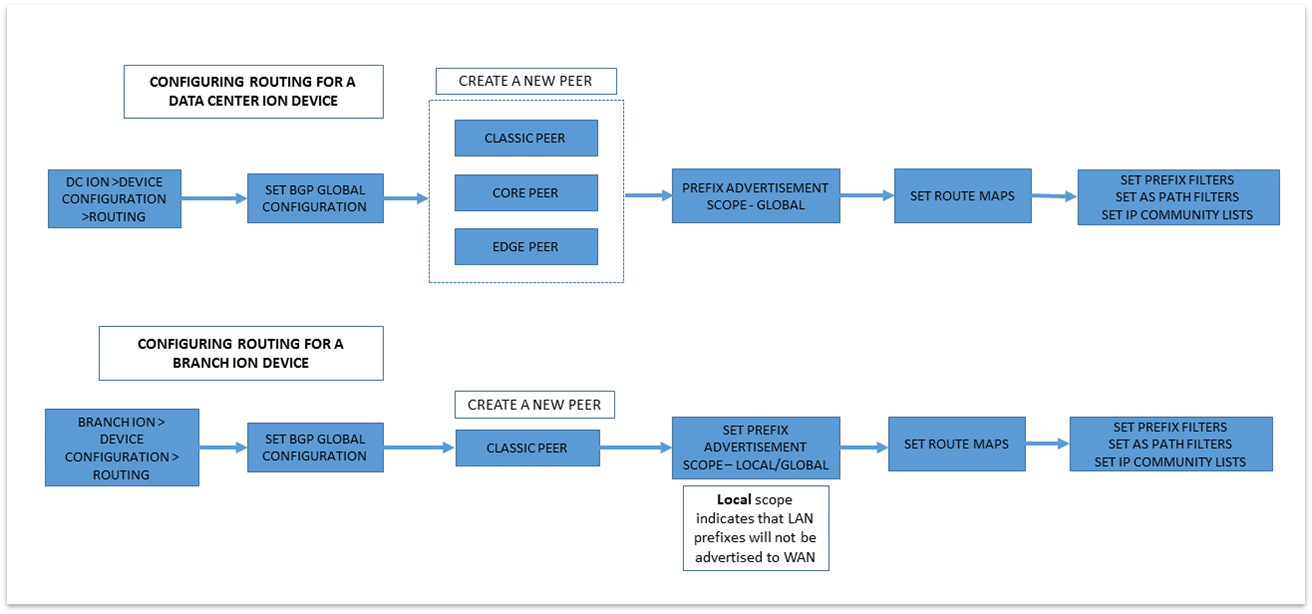Prisma SD-WAN
Configure Dynamic Routing
Table of Contents
Expand All
|
Collapse All
Prisma SD-WAN Docs
-
-
-
- CloudBlade Integrations
- CloudBlades Integration with Prisma Access
-
-
-
-
- 6.5
- 6.4
- 6.3
- 6.2
- 6.1
- 5.6
- New Features Guide
- On-Premises Controller
- Prisma SD-WAN CloudBlades
- Prisma Access CloudBlade Cloud Managed
- Prisma Access CloudBlade Panorama Managed
Configure Dynamic Routing
In Prisma SD-WAN, you can configure dynamic routing using BGP for a branch or data
center. The configuration on a branch ION device is identical to a data center ION
device.
| Where Can I Use This? | What Do I Need? |
|---|---|
|
|
You can configure dynamic routing using Border Gateway Protocol (BGP) for a branch or data
center. The configuration on a branch ION device is identical to a data center ION
device with the exception of prefix advertisement in a branch and additional core
and edge peers in a data center.
Configure dynamic Border Gateway Protocol (BGP) routing on a branch ION device for
Internet, private WAN underlays, LAN and standard VPNs. The ION device learns routes
dynamically from private WAN and standard VPN BGP peers and distributes to the LAN
BGP peers. Routes learnt from LAN peers will be sent to the Prisma SD-WAN controller
via API and to other LAN and private WAN BGP peers.
On a DC mode ION, you can configure dynamic routing only on those
interfaces of the ION device, which are configured as—Peer with a
Network or a standard VPN interface. ION devices in data centers do
not support routing on interfaces configured as Use to Connect to
Internet.
The differences in configuration between a branch ION device
and a data center ION device in the relevant sections.
Prisma SD-WAN supports the Open Shortest Path First routing protocol with
the Layer 3 switches on the LAN at Branch and DC sites.
OSPF is an interior gateway protocol (IGP) often used to manage network
routes dynamically in large enterprise networks. It dynamically determines routes by
obtaining information from other routers and advertising routes to other routers
through Link State Advertisements (LSAs). The information gathered from the LSAs is
used to construct a network topology map. This topology map is shared across routers
in the network and used to populate the IP routing table with available routes.
Branch site LANs support either BGP or OSPF.

Use
the following steps to configure dynamic routing using BGP:
